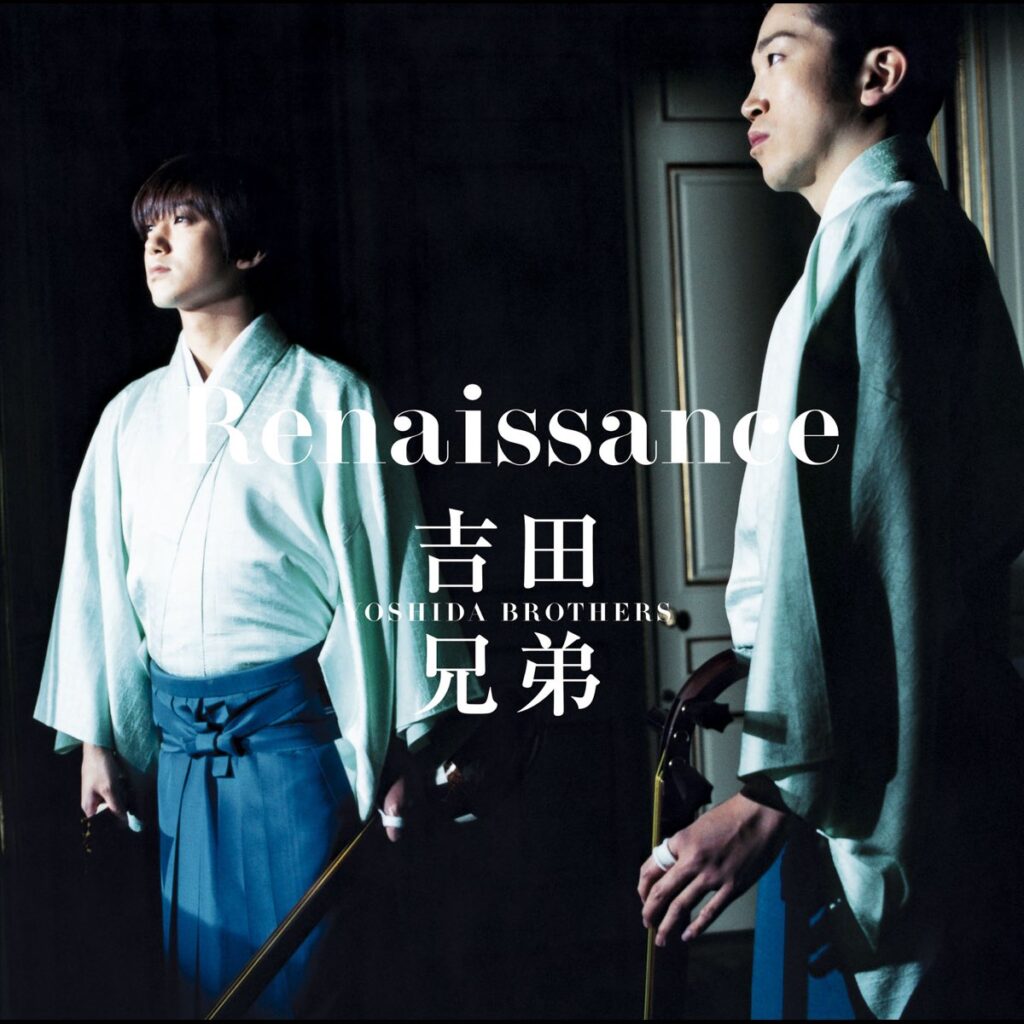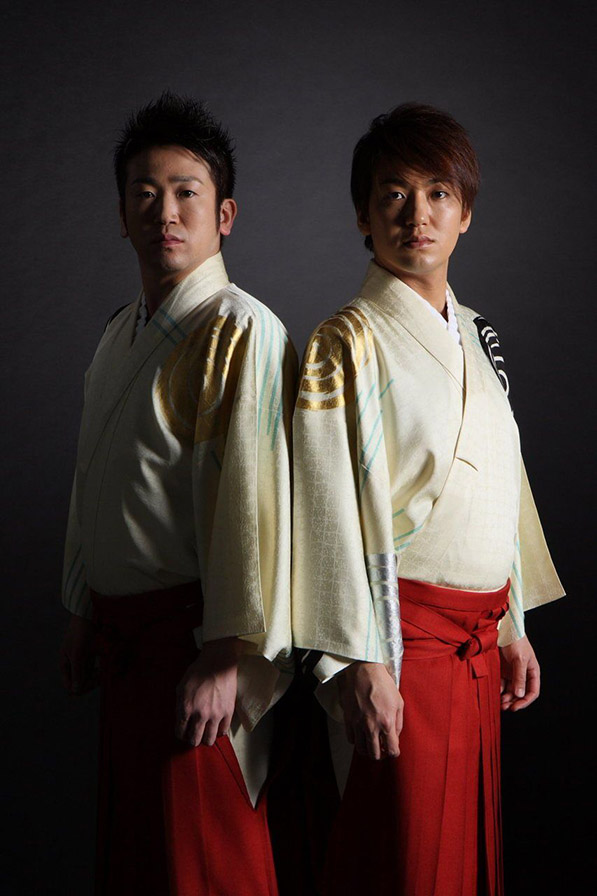It was about time. After talking so much about the Yoshida Brothers on the blog and on the web, what better than to give you a review and recommendation of one of the albums that I like the most of their discography.
This week I will talk about their fifth studio album: Renaissence.

Originally from Noboribetsu, a village on the island of Hokkaidô, Ryôichirô Yoshida (1977) and Kenichi Yoshida (1979) began playing the shamisen at the age of five. They learned from the master Takashi Sasaki who, sadly, passed away in 1999. That same year the Yoshida Brothers would release their first album.

Five years later, in 2004, they would publish Renaissence. This is the complete repertoire in its international version.
01. NIKATA
02. 鼓動 (Kodo)
03. 思い出の風 (Omoide no Kaze)
04. indigo
05. 蒼月 (sôgetsu)
06. 竹田の子守唄 (takeda no komoriuta)
07. たんと節 (Tanto bushi)
08. 蜃気楼 (shinkirô)
09. Sistina
10. 朧月夜 (Oborozukiyo)
Call me old-fashioned, but I have always liked to listen to albums from beginning to end. To understand them as a whole and not by individual songs that are part of it. That’s why I’ll start with NIKATA, the song that opens the album.
You may wonder what the title means and the truth is, its meaning is curious. It is an acronym for Akita Nikata Bushi, one of the most popular songs in the classic Tsugaru Shamisen repertoire. The difference in the title comes because they open with the original piece with two shamisen but then they turn it into a modern track with drums, shakuhachi, synth and bass. A very fresh track that will undoubtedly catch your attention. As a curiosity, its videoclip does not include the classic intro.
The second song of the album is the most popular of all the Yoshida Brothers’ discography. Kodo was a revolution in the shamisen world. In fact, a remix of this song accompanied the Japanese advertisement of the Nintendo Wii console. This fact made the Yoshida brothers really popular in Japan. Talking about the song: what can I say? It’s a gale of super fresh and round notes, played at breakneck speed with perfect technique and execution. It is one of the songs that any shamisen beginner always wants to learn to play (myself included). As a curiosity I will tell you that I had the honor to learn it from Kenichi Yoshida himself and play it with him.
After the storm comes the calm. Omoide no Kaze, one of my favorites on the album, is a beautiful piece. A crystalline sounding acoustic guitar and a mandolin accompany the shamisen as the main voices of the song. This kind of songs are a constant in their discography. They choose instruments very different from the shamisen and create simple but unique melodies, achieving calm and nostalgic atmospheres.
The intensity rises again and Indigo breaks through. The shamisen riding at the beginning gets into your head to shine next to a synth that raises its sound until it reaches the saxophone winds. Who would have thought that with that start we would end up listening to a Blues with Sax and Shamisen solos? A great song that deserves a few listens.
Sôgetsu works as an interlude of the album and transports us to a more traditional Japan with the trio of classical instruments. Taiko, shakuhachi and shamisen come together, as an improvisation, to show us the Japanese folklore of the early twentieth century.

The sixth track of the album, Takeda no Komoriuta, is a melodic and nostalgic song with the shamisen as the protagonist over a synth and bagpipe base. Yes, for the first time in their career, they included this wind instrument. It is a song, that whenever I listen to it, evokes me to the scenery of a sunset. A song that will relax you.
Tanto Bushi is next on the list. It should be noted that this song does not appear on the original Japanese album. In that version, Tsugaru Yosare Bushi, performed by Kenichi Yoshida, takes its place. Speaking of the theme song, Tanto Bushi, it is a song from the traditional tsugaru shamisen repertoire. This time a shakuhachi is added to it, which accompanies it beautifully. Along with Ohara Bushi, it is my favorite traditional piece.
We are approaching the end and the climax of the album. Shinkirô is my favorite song. I guess it’s because of the flamenco feel of the shamisen that suits it so well. This song is incredible, I love that at all times the shamisen doesn’t stop soloing and it seems as if it was singing a lyric over the synth and guitar base. When you listen to this kind of songs from the Yoshida Brothers is when you know that you are not in front of just any band. Enjoy it.
Sistina is one of the Yoshida Brothers’ most ambitious songs. It combines all the registers shown in the album. From the powerful and catchy riffs, through the sweet and nostalgic melodies and culminating with an epic ending with synth and electric guitar.
Oborozukiyo closes the album. It would fall into the group of melodic and nostalgic songs but this time it works better as the ending of the album. The synth is used as a xylophone which makes it reminiscent of a night lullaby.
It has been difficult for me to choose only one album of the Yoshida Brothers. But I think that Renaissence is very representative. That’s why I strongly recommend you to listen to it. Even if you are not a lover of the shamisen sound, it is a fantastic album that any music lover will appreciate and enjoy.
See you next week!
Jose